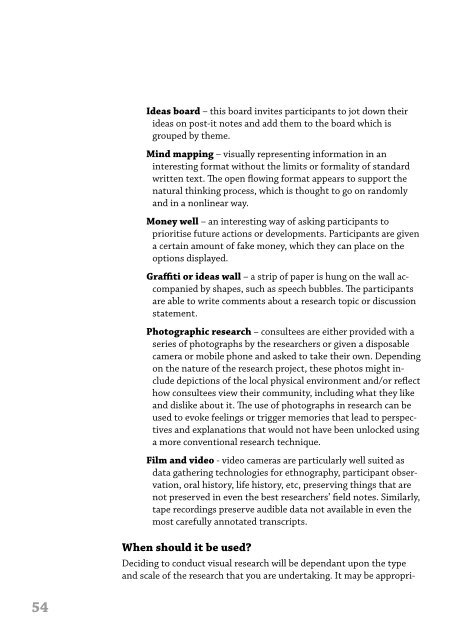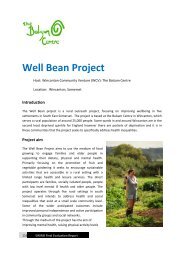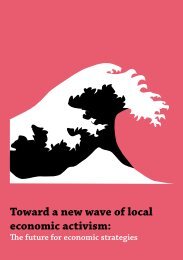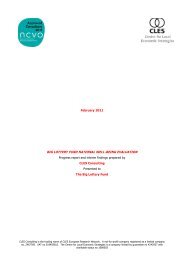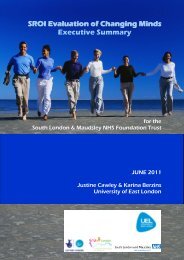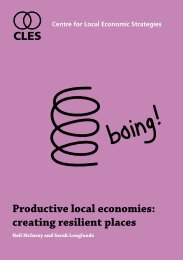Research Methods Handbook.pdf - CLES
Research Methods Handbook.pdf - CLES
Research Methods Handbook.pdf - CLES
Create successful ePaper yourself
Turn your PDF publications into a flip-book with our unique Google optimized e-Paper software.
Ideas board – this board invites participants to jot down theirideas on post-it notes and add them to the board which isgrouped by theme.Mind mapping – visually representing information in aninteresting format without the limits or formality of standardwritten text. The open flowing format appears to support thenatural thinking process, which is thought to go on randomlyand in a nonlinear way.Money well – an interesting way of asking participants toprioritise future actions or developments. Participants are givena certain amount of fake money, which they can place on theoptions displayed.Graffiti or ideas wall – a strip of paper is hung on the wall accompaniedby shapes, such as speech bubbles. The participantsare able to write comments about a research topic or discussionstatement.Photographic research – consultees are either provided with aseries of photographs by the researchers or given a disposablecamera or mobile phone and asked to take their own. Dependingon the nature of the research project, these photos might includedepictions of the local physical environment and/or reflecthow consultees view their community, including what they likeand dislike about it. The use of photographs in research can beused to evoke feelings or trigger memories that lead to perspectivesand explanations that would not have been unlocked usinga more conventional research technique.Film and video - video cameras are particularly well suited asdata gathering technologies for ethnography, participant observation,oral history, life history, etc, preserving things that arenot preserved in even the best researchers’ field notes. Similarly,tape recordings preserve audible data not available in even themost carefully annotated transcripts.When should it be used?Deciding to conduct visual research will be dependant upon the typeand scale of the research that you are undertaking. It may be appropriateto conduct this type of work at the start of the research process as away of highlighting issues to be examined further during the course ofthe process, or it may be something that is developed as part of a blendof evaluation methodologies. Visual techniques can be used in manysettings, as an alternative to more traditional methods and may beparticularly useful as:• A method for effectively engaging hard to reach groups withinareas (e.g. young people). Pictures and photographs can helpevoke opinions and allow the use of imagination in expandingon a scene.• Offering an alternative to traditional discussion groups, yet stillbeing able to draw out the rich variety of qualitative informationfrom participants.• For use within workshops, providing a task based activity to getmembers of a group working and thinking together.• A method of producing tangible outcomes at the end of theresearch process (e.g. series of community generated impactsillustrating how local people view the local area).What do I need to consider?• Consider who should be involved in this type of visual researchand that the technique is appropriate for the type of audienceyou are seeking ideas and opinions from.• Ensure that research is conducted in a neutral venue where peoplewill feel comfortable and able to share their opinion freely.• Think about how the visual research will link into the rest of themethodology and how you will use it to inform the evaluationprocess.• If generating photographic or film media as part of the research,those people photographed and filmed need to give theirconsent for their images to be used for the purposes of research.54 55


